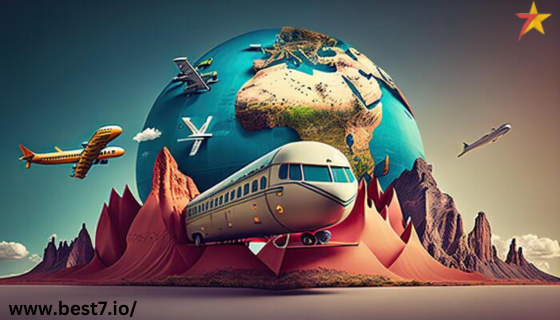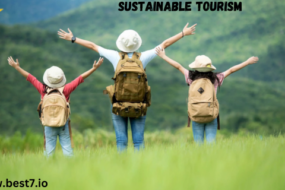
The COVID-19 pandemic has hit the global tourism industry more badly than any previous global catastrophe, preventing international travel, closing borders, and destroying the economies of many nations heavily reliant on tourism. As the authorities began to lift restrictions and administer vaccines, the tourism industry also started recovering.
It was marked by the revival of the travel demand and new strategies and approaches. The current essay will consider the processes that shape the post-pandemic recovery of the travel industry. It is notable to evaluate the tourism industry to see how travel and other tourist markets have changed and recovered after the pandemic.
Results Of The COVID-19 Pandemic For Global Tourism
The COVID-19 pandemic stopped the economy of tourism. According to the United Nations World Tourism Organization, there was a fall of 74% in international tourists’ arrivals in 2020.
As far as the pandemic affected business, the hospitality sector faced an increase in unemployment levels as it had massive layoffs. Meanwhile, many tourism-dependent countries, including those in southeastern Asia and the Caribbean, saw their economic rates drop heavily.
The tourism industry lost an estimated $1.3 trillion in export revenues in 2020, which was among the greatest depressions in the global tourism industry. A case in point is Thailand, where more than 40 million international tourists would visit during the previous years.
It was one of the examples of a country that dealt heavily due to the pandemic. In 2020, the number of international arrivals reduced by 83%, leading to an economic contraction rate of 6.1%.
It was impossible for multiple hotels and resorts to operate, and thousands of catering and accommodation establishments were closed permanently. However, as the country was heavily reliant on the tourism sector, it primarily targeted the recovery with domestic tourism and green travel aspects.
Recovery Of The Tourism Industry
Travel recovery started shaping in 2021 with the vaccines’ extension. By 2022, global tourism had grown by 60% compared to the previous year. The demand to travel was huge as people have been suffering from travel restrictions, and the tourism industry will return to the pre-covid level in 2024 with the following increase.
However, the recovery will depend on restrictions imposed throughout the following years, the economic situation, and the development of the travel industry in the future.
Shifts In Travel Behavior And The Rise of Domestic Tourism
It is evident that people switched their preferences concerning traveling. The restrictions justified the mass travel that caused most of the places to be overcrowded. People have turned to domestic tourism as the only travel opportunity. The rise of the domestic tourist flows since domestic travel was the only accessible opportunity at the period of 2020-2021.
Regional Case: The U.S.
In the U.S., domestic tourism grew by 30% in 2021. People mainly have been enjoying trips to the countryside, national parks, and rural areas. The similar tendency was observed in Europe, with Italy and Spain being the most actively visited by the citizens of the countries and thus partially saving their tourism sector. Governments and tourism boards promoted traveling within the country, and people tend to discover their own country.
Future Of The Domestic Tourism
It is evident that domestic tourism will be a serious factor throughout the post-coronavirus period. Even though international travel is being even more actively involved, people tend to take shorter and more flexible trips.
According to the prediction, domestic tourism will make up 65% of the global tourism revenues in 2025, whereas at that period, domestic tourism made up 55% of tourism. The rise of domestic travelers began to determine the importance of sustainable tourism as people got into the need to enjoy nature with due care and attention.
Innovation and Resilience In The Hospitality Industry
The reasons why the hospitality industry is elastic are historical examples, strengths of the modern travel structures, well-constructed management, staff relocation, and upscaling.
Streams:
Holacracy: the creation of non-hierarchical structures in hotel management;
Back-to-basis: the situation where returns to the production area are observed;
Floor Plans And Construction Variety.
Items:
Excess: the hotel premises are frequently overloaded with non-necessary items;
Retrospective mobility: the renovation of the mobility system—to bars and pubs on bicycles and electric bikes;
Upscaling: the hotel chains in the format of hostels.
1. Health and Safety Protocols
In response to the pandemic, hotels and resorts have adopted strict health and safety protocols, from contactless check-ins to disinfecting rooms. These measures have proved effective in restoring traveler confidence; research shows that in 2022, as many as 75% of travelers considered health and safety standards the top priority when choosing accommodations.
2. Flexible Booking
The pandemic has caused a lot of uncertainty, which is why travelers began to value having the possibility of changing or canceling their plans without major financial consequences. Hotels and airlines have thus updated the booking policies; this trend is expected to continue after the pandemic, as 60% of travelers believe maximum booking flexibility is the top priority after COVID-19.
3. Digital Transformation
Digitization has been gaining momentum in the travel industry in response to the pandemic, with hotels adopting new technologies that range from AI robots providing customer service to mobile applications for guests and virtual tours. These innovations are to stay: by 2023, 80% of hotels are expected to use digital check-in and check-out apps.
4. Sustainability
A similar trend was observed as to the interest in sustainability and environmentally conscious travel. Hotels and resorts responded by adhering to such standards as reducing the use of plastic and energy consumption. According to the forecast, by 2030, as many as 70% of hotels worldwide are projected to offer responsible and sustainable experiences.
5. Staycations and Workcations
The emergence of new travel trends, such as staycations and workcations for remote workers, caused the development of the corresponding features in hotels. They started to offer packages to remote workers with a stay in a comfortable and high-speed internet, quiet rooms, and a long period of stay. By 2024, it will be possible to book hotels for a change of scenery trip, as it will comprise 25% of all hotel bookings.
6. Wellness
After the pandemic, people have become more concerned with their mental and physical wellness, and it has caused the popularity of the wellness tourism segment. Hotels started to offer wellness programs, including yoga practices, spa procedures, and outdoor activities. 15% of overall tourism will comprise the wellness segment.
7. Personalization
Hotels introduced the opportunity of personalization to reconsider their approaches to meeting the needs and demands of clients. Data analytics and AI allow to offer a unique experience, from planning a stay at the hotel and room features to creating a personalized travel itinerary. By 2025, the percentage of hotels that use the personalization approach will reach up to 85%, and the majority of them will use this strategy for guest retention.
These strategies and innovative approaches not only helped the hospitality sector to recover after the long period of challenges but also provided new opportunities for future growth. In addition, these lessons will significantly impact the development of the travel and tourism sector, as more attention will be paid to flexibility, sustainability, and other essential factors.
Future Trends In Global Tourism And Sustainable Growth
The prospects of global tourism remain positive, and new trends appear in this regard. However, the period of the pandemic changed the approaches and contributed to the emergence of the new strategy, sustainable tourism, which will be the perspective for the future.
After the opportunities for traveling to other countries will be opened, people will be able to apply new approaches and consider the high relevance of sustainable tourism as one of the new trends in the travel industry.
According to the case study conducted by the World Travel & Tourism Council in 2021, destinations that opted for sustainable tourism grew faster after the pandemic than those that did not.
For instance, New Zealand’s focus on eco-tourism and responsible travel led to a 20% increase in visitor spending in 2021, while experiencing a 60% decrease in international visitors.
Judging by this success story, sustainable tourism may lead to economic growth and help preserve natural resources. At present, predictions suggest that sustainable tourism will grow at a rate of 7% on an annual basis, as an increasing number of travelers will look for eco-friendly destinations and experiences.
By the year 2030, 50% of all global travels will be conducted sustainably, encouraging the growth of green accommodations, responsible wildlife tourism, and carbon-neutral travel.












